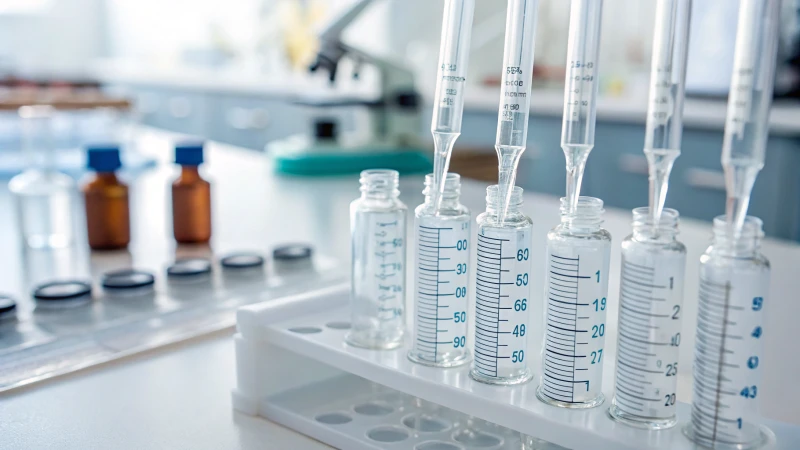
Ever wondered why glass droppers are the unsung heroes in pharmaceuticals?
Glass droppers excel in pharmaceuticals due to their precision in dosing, resistance to chemical reactions, and integrity maintenance. They are durable, comply with stringent regulations, and are perfect for sensitive formulations like oils and serums, making them an indispensable tool in the industry.
I remember when I first started delving into the world of pharmaceuticals, I was amazed by the importance of precision and safety. Glass droppers were a revelation—these small tools manage to deliver exact doses without reacting chemically with the medicine. Curious about why they are favored over other materials? It’s not just about precision; it’s their resistance and durability that make them stand out. They comply with rigorous regulatory standards and handle sensitive formulations like a pro. As I learned more, I realized how their design caters perfectly to the delicate needs of pharmaceutical products.
Glass droppers resist chemical reactions better than plastic ones.Echt
Glass is inert and doesn't react with most chemicals, unlike some plastics.
Plastic droppers are more durable than glass droppers.Vals
Glass is more durable and resistant to wear compared to plastic in many applications.
How Do Glass Droppers Ensure Precise Dosing?
Have you ever wondered how a tiny glass dropper can deliver just the right amount of liquid every single time?
Glass droppers achieve precise dosing through meticulous calibration, quality materials like borosilicate glass, and airtight seals. These elements ensure consistent drop sizes and prevent contamination, making them perfect for pharmaceuticals and cosmetics.
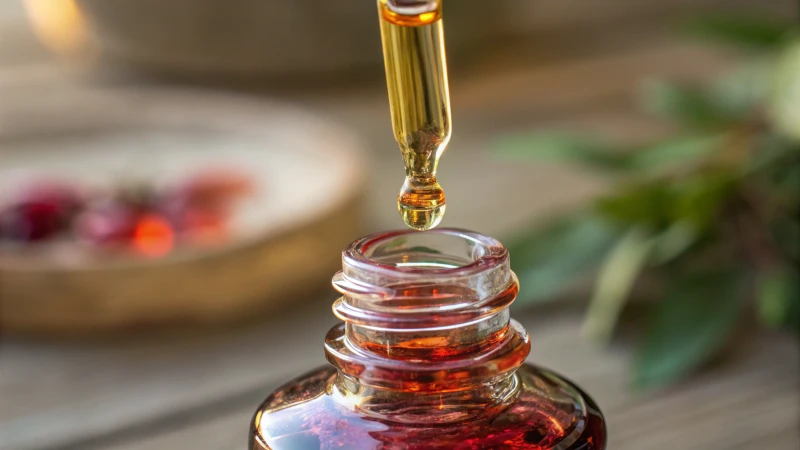
Precision Engineering in Glass Droppers
I remember the first time I marveled at the precision of a glass dropper. It was during my early days in the industry, and I was amazed by how these simple tools could deliver such accuracy. Behind this magic is precision engineering1. Each pipette tip undergoes careful calibration, often adhering to strict standards like USP of ISO. This process ensures that each drop is uniform, which is crucial for products that require exact dosing, like medicines and serums.
Table 1: Calibration Standards
| Standard | Beschrijving |
|---|---|
| USP | United States Pharmacopeia; focuses on medicine safety |
| ISO | International Standards Organization; ensures quality and safety |
Material Matters
Choosing the right material for droppers is an art in itself. When I first started in the business, I quickly learned that borosilicate glass is a top choice because of its chemical resistance and durability. It doesn’t react with sensitive formulations, which is vital for maintaining the integrity of products like essential oils or lab samples2.
Airtight Seals for Accuracy
The secret to a dropper’s consistency lies in its airtight seal. High-quality silicone or TPE (thermoplastic elastomer) bulbs are used to ensure that no air gets in or out, preventing any overflows or under-dispensing. I recall testing various seals myself to find the one that perfectly maintained delivery consistency.
Bullet Points:
- Ensures no air infiltration
- Prevents contamination
- Maintains consistent dosing
The Role of Optical Calibration
Advanced manufacturers take precision a step further with optical calibration technologies. Real-time laser systems adjust even the smallest deviations to ensure that each dropper delivers exactly the same amount every time. This level of precision is why these droppers are so trusted in the pharmaceutical industry.
Learn more about optical calibration techniques3.
The Significance of Chemical Resistance
One thing I always emphasize when discussing droppers is the importance of chemical resistance. Glass is non-reactive, which means it won’t leach chemicals into the product. This property is essential for handling sensitive formulations and maintaining their purity and efficacy.
Consider the advantages of using borosilicate glass4 over other materials for your pharmaceutical needs.
Glass droppers use borosilicate for chemical resistance.Echt
Borosilicate glass is used for its non-reactive properties, ensuring purity.
Silicone bulbs in droppers prevent contamination.Echt
Silicone bulbs create airtight seals, preventing air and contaminants.
Why Is Chemical Resistance Important in Pharmaceutical Packaging?
Imagine opening a bottle of essential medicine only to find it ineffective. That’s the risk without proper packaging.
Chemical resistance in pharmaceutical packaging is essential because it protects drugs from degradation and contamination, ensuring their safety and effectiveness. By preventing reactions between packaging materials and the medication, it maintains drug potency and integrity.
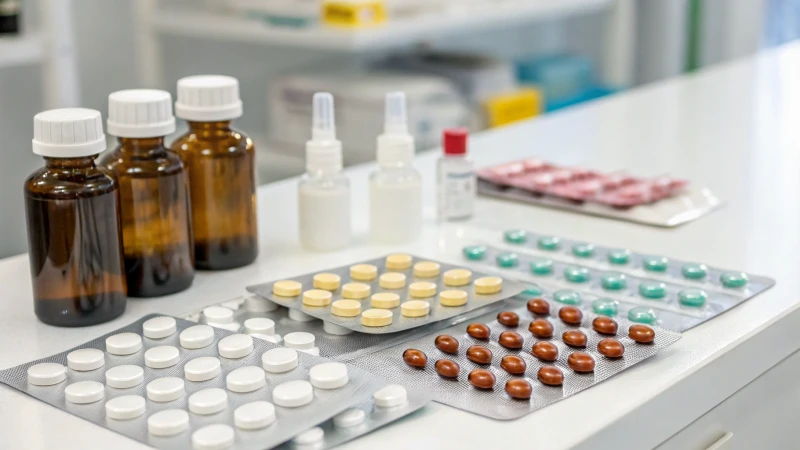
Understanding Chemical Interactions
When I first delved into pharmaceutical packaging, I learned just how important chemical resistance is. Picture this: a life-saving drug rendered useless because it reacted with its container. That’s not just a nightmare scenario; it’s a reality if we overlook the choice of materials. High chemical resistance in packaging acts as a shield, protecting against such detrimental interactions. I remember my first tour of a manufacturing facility, seeing borosilicate glass vials lined up like soldiers, ready to guard their precious contents.
Materials with High Chemical Resistance
In the quest for the best materials, I’ve seen how companies lean towards borosilicate glass and certain plastics for their stability. Borosilicate glass, especially, is like the superhero of pharmaceutical containers—resistant to thermal and chemical shocks, making it perfect for delicate formulations. During my visits to trade fairs, I’ve handled various materials and always returned to the reliability of borosilicate.
| Type materiaal | Chemical Resistance Level | Common Uses |
|---|---|---|
| Borosilicate Glass | High | Injectable vials |
| Polypropylene (PP) | Moderate | Liquid medicines |
| Polyethylene (PE) | Moderate | Syrup bottles |
Regulatory Standards and Compliance
Navigating the maze of regulatory standards can be daunting, but they’re non-negotiable for ensuring safety. When I started working with suppliers, I quickly learned the importance of compliance with bodies like the FDA and EMA. It’s a relief knowing that adhering to these guidelines means our products maintain their integrity without compromising safety.
Packaging must withstand potential chemical interactions without altering the drug’s properties5.
Importance in Drug Stability and Efficacy
I’ve had countless discussions with colleagues about how packaging affects drug stability. One story that stuck with me was about an acidic drug that lost its efficacy because of reactive packaging. It was an eye-opener about the real consequences of inadequate materials.
Any interaction between the drug and packaging could lead to oxidation, hydrolysis, or even the formation of toxic by-products.
The Role of Innovation
Innovation in packaging is something I’ve always been excited about. Nano-coatings on glass are game-changers, providing extra layers of protection against chemical exposure while maintaining inert properties. This kind of tech feels like science fiction brought to life.
These coatings maintain the glass’s inert properties while offering additional benefits such as UV protection6.
Case Study: Borosilicate Glass vs. Plastic Containers
Comparisons between borosilicate glass and plastic containers often pop up in industry discussions. I recall a case study where drugs stored in borosilicate glass maintained stability for 24 months, while those in plastic degraded within a year.
Studies comparing borosilicate glass and plastic containers show that glass provides superior chemical resistance, especially for acidic or alkaline drugs.
It’s insights like these that reinforce my commitment to choosing the right materials.
For more insights into choosing the right material for your pharmaceutical needs, consider exploring our comprehensive guide on material selection7.
Borosilicate glass is used for injectable vials.Echt
Borosilicate glass has high chemical resistance, ideal for injectables.
Polyethylene is highly resistant to chemical interactions.Vals
Polyethylene has moderate chemical resistance, suitable for syrups.
Why is durability essential in choosing glass droppers?
Ever wondered why durability matters so much in choosing a glass dropper? Let me take you on a journey through my experiences in the world of cosmetics and packaging.
Durability is crucial in selecting glass droppers because it ensures they can endure various stresses without jeopardizing the product’s integrity. This affects their lifespan, safety, and cost-effectiveness, making durability a vital factor for pharmaceuticals, cosmetics, or lab applications.
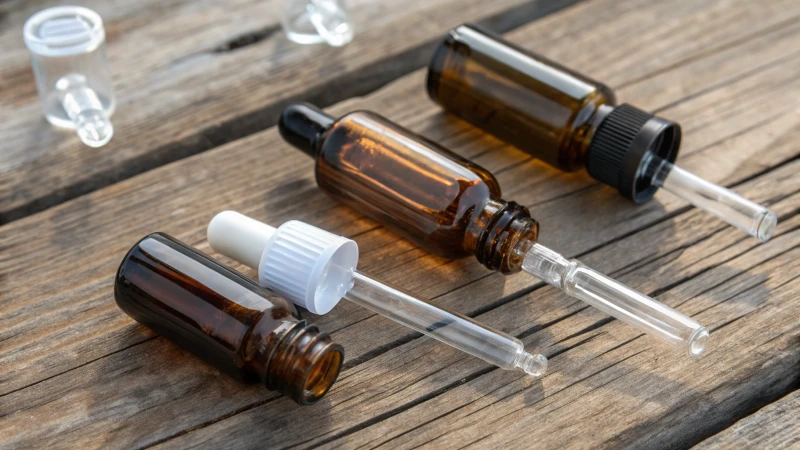
Understanding Material Durability in Glass Droppers
Let me share a story from when I first started exploring glass droppers for my skincare line. I remember standing in a warehouse, surrounded by rows of these delicate beauties, and learning that the type of glass used makes all the difference. Borosilicate glass caught my attention; it has this incredible ability to resist thermal shock and chemical corrosion, which means it stays intact under harsh conditions like temperature changes and chemical exposure.
Durability and Product Integrity
In the pharmaceutical industry, where precision and purity are everything, durable glass droppers are non-negotiable. I once had a client who stressed how leaching and contamination could ruin an entire batch of sensitive formulations. Using robust glass not only maintained the integrity but also reduced waste with fewer replacements. This aligns with sustainability goals8, something we’re all increasingly conscious of.
| Factor | Impact on Durability |
|---|---|
| Glass Type | Borosilicate > Soda-Lime |
| Chemical Exposure | Inert glass prevents reactions |
| Thermal Resistance | Prevents cracking under temperature shifts |
Economic Considerations
I’ve learned firsthand that while durable glass droppers might seem pricier upfront, they often pay for themselves over time. Imagine fewer breakages during shipping or handling—this means less stress about unexpected costs and more peace of mind. Not to mention, offering durable products builds customer trust and loyalty—something I always strive for.
- Cost Savings Example:
- Initial Cost: Higher for premium droppers.
- Long-Term Savings: Fewer replacements mean lower costs over time.
- Market Appeal: Quality products enhance customer trust9 and brand loyalty.
Durability’s Role in Regulatory Compliance
Regulatory compliance can be daunting, but it’s a breeze when your droppers are made from durable glass. Meeting FDA regulations10, for example, requires that packaging doesn’t react with its contents or degrade over time. I’ve found that selecting durable materials simplifies these processes, helping to avoid regulatory pitfalls.
Choosing durable glass droppers isn’t just about ensuring they perform well day-to-day; it’s about aligning with larger goals like safety, cost management, and environmental responsibility. From my experience, understanding and prioritizing durability has been a game-changer in decision-making for product selection.
Borosilicate glass is more durable than soda-lime glass.Echt
Borosilicate glass resists thermal shock and chemical corrosion better.
Durable droppers increase regulatory compliance costs.Vals
Durable materials simplify compliance, avoiding regulatory issues.
How Do Glass Droppers Meet Regulatory Compliance Standards?
Imagine a world where precision meets safety in every drop. Glass droppers aren’t just about looks; they’re about meeting rigorous standards to ensure your products are top-notch.
Glass droppers achieve regulatory compliance by strictly following guidelines set by authorities like the FDA and EU. They undergo thorough testing for material quality, chemical resistance, and safety, ensuring that they maintain product integrity and safety.
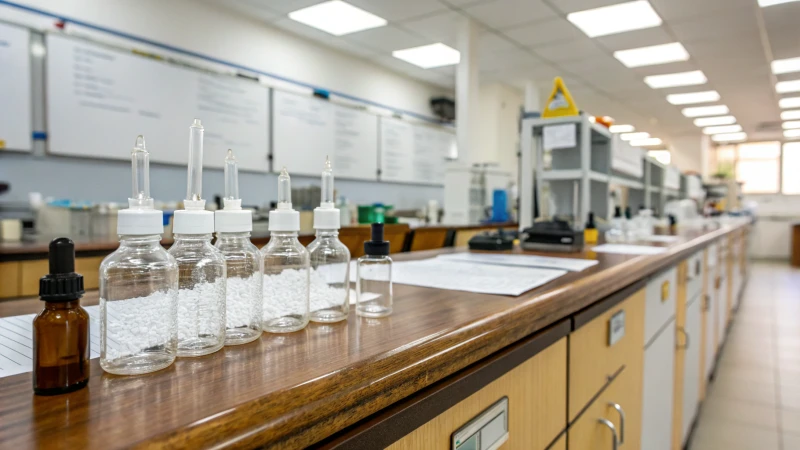
Key Regulatory Bodies and Standards
When I first started delving into the world of glass droppers, I was amazed at the meticulous standards they had to meet. Imagine navigating through a sea of regulations from bodies like the FDA11 in the US or the European Medicines Agency12 in the EU. These organizations ensure droppers are safe for pharmaceutical and cosmetic use, enforcing standards that would make even the most meticulous organizer proud.
| Regulatory Body | Region | Key Standards |
|---|---|---|
| FDA | USA | USP <660>, cGMP |
| EMA | EU | EU GMP Annex 1 |
Material Compliance and Testing
I remember the first time I learned about borosilicate glass—its resilience was impressive. Glass droppers must be crafted from such high-quality materials to prevent any chemical interactions. The rigorous leachability studies13 they undergo ensure no harmful substances leak into your precious products. These tests are not just about ticking boxes; they’re about safeguarding what matters most to us all.
Production Standards and Quality Assurance
Walking through a production line, seeing automated systems meticulously calibrating each dropper, is something to behold. Manufacturers don’t just stop at making things look good—they adhere to good manufacturing practices (GMP) to maintain consistent quality. The certificates of analysis14 they provide offer peace of mind, verifying compliance with industry standards that ensure every drop is just right.
Traceability and Documentation
Keeping track of every step in the journey of a glass dropper is no small feat. Traceability requires detailed documentation of the entire supply chain—imagine embedding technologies like RFID tags and QR codes in packaging for easy tracking. These features ensure authenticity and safety throughout distribution, making it easier to sleep at night knowing that compliance is ready for any audit.
Customization and Environmental Standards
Customization adds a personal touch, allowing for features like UV-protective coatings or tamper-evident caps. Yet, as we move towards a more sustainable future, environmental standards are gaining traction. Focusing on eco-friendly materials15 not only meets regulatory requirements but also aligns with market trends towards sustainable packaging solutions—a win-win situation if you ask me.
Glass droppers must use borosilicate glass for compliance.Echt
Borosilicate glass is required to prevent chemical interactions.
RFID tags are mandatory for all glass dropper packaging.Vals
RFID tags are used but not mandatory for all packaging.
Conclusie
Glass droppers are essential in pharmaceuticals for their precision, chemical resistance, durability, and compliance with regulations, ensuring safe and effective delivery of sensitive formulations.
-
Explore how precision engineering contributes to accurate dosing with glass droppers. ↩
-
Discover how glass droppers are used in laboratory settings for sample handling. ↩
-
Understand how optical calibration ensures manufacturing precision. ↩
-
Learn why borosilicate glass is preferred for pharmaceutical applications. ↩
-
This link explores how compliance with regulatory standards ensures drug safety by preventing adverse chemical interactions. ↩
-
Discover how nano-coatings can enhance chemical resistance and offer UV protection in pharmaceutical packaging. ↩
-
Learn about selecting the best materials to ensure chemical resistance and drug stability in pharmaceutical packaging. ↩
-
Learn about how durable glass contributes to sustainability efforts by reducing waste. ↩
-
Discover how durability enhances customer satisfaction and loyalty. ↩
-
Understand the regulatory standards for packaging materials to ensure compliance. ↩
-
Discover how the FDA ensures that glass droppers meet safety and quality standards in the US market. ↩
-
Learn about the EMA’s role in setting safety standards for glass droppers in Europe. ↩
-
Understand how leachability studies ensure that glass droppers don’t release harmful substances. ↩
-
Find out how certificates of analysis verify that glass droppers meet industry standards. ↩
-
Explore sustainable materials used in glass dropper production for environmental compliance. ↩



